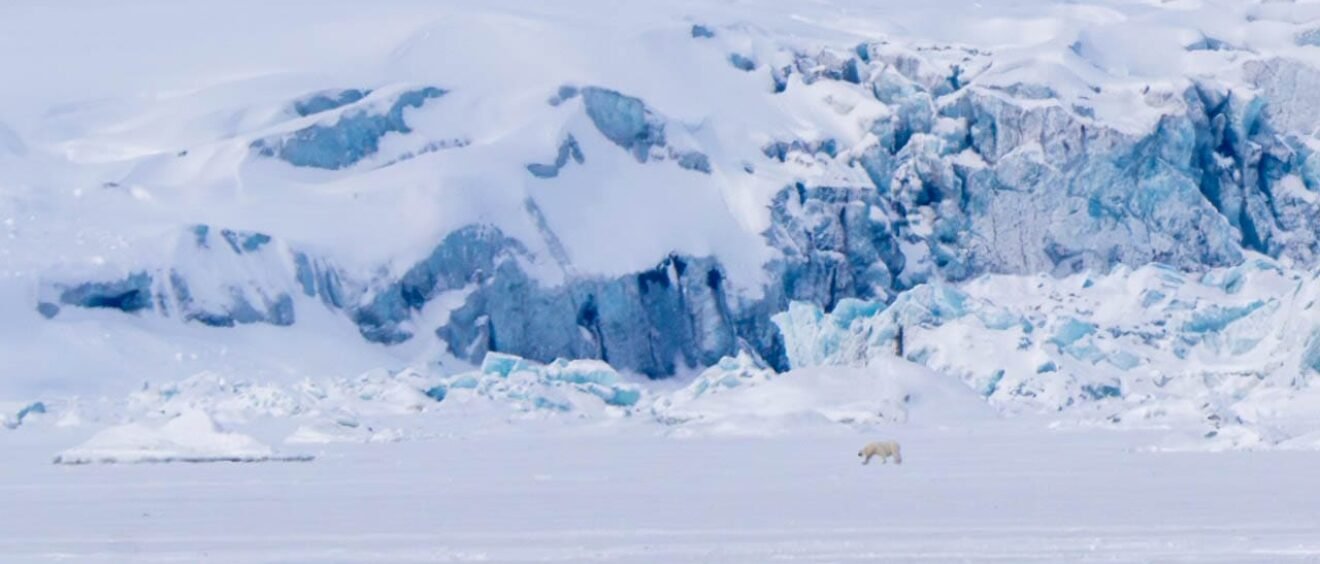
Polar Bears (a.k.a. pixel bears)
- Svalbard Photography Expedition
- How to Get to Svalbard (and what to do once you are there)
- Svalbard Photography Tour
- A Snowmobile Trip to East Svalbard
- Svalbard Photography Expedition on the M/V Freya
- Landscapes of Svalbard
- Harp Seals in the Sea Mist
- Falling in Love with the Arctic Walrus
- The Bearded Seal - A New Favourite
- Minke Whale Surprise
- Polar Bears (a.k.a. pixel bears)
- The Birds of Svalbard
- Reflections on Our Trip to Svalbard (and Svalbard Departure Tips)
In 2025, Norway introduced stricter regulations on viewing polar bears in Svalbard, aimed at protecting the animals from unnecessary disturbance. The new rules require visitors to stay at least 500 meters away from polar bears between March 1 and June 30, and 300 meters from July 1 to February 28. While I completely support protecting polar bears and their fragile environment, I’ll admit — these distances make meaningful photography pretty difficult. This is why we spent the first few days of our expedition hovering around 80° north, out on the pack ice, which lies in international waters and isn’t subject to the same restrictions.
Our first polar bear encounter came in the middle of the night — classic Arctic timing. Just after 3 a.m., our guide Josh gently knocked on our cabin door:
“Andy and Jennifer, it’s just past 3 a.m. We’ve spotted a bear. It’s at least 4 kilometres away, but you can see it from the bridge.”
We raced up the stairs to the bridge, binoculars in hand, and began scanning the horizon. The challenge? The Arctic has no real reference points. “See those two rocks on the hill? And then to the right of that there is a dark patch along the ice edge. Look a little to the right between those…” It’s nearly impossible to explain – much easier to take a photo of the landscape and have someone who has seen it zoom all the way in to show you where to look. For context, here’s what we were looking at.
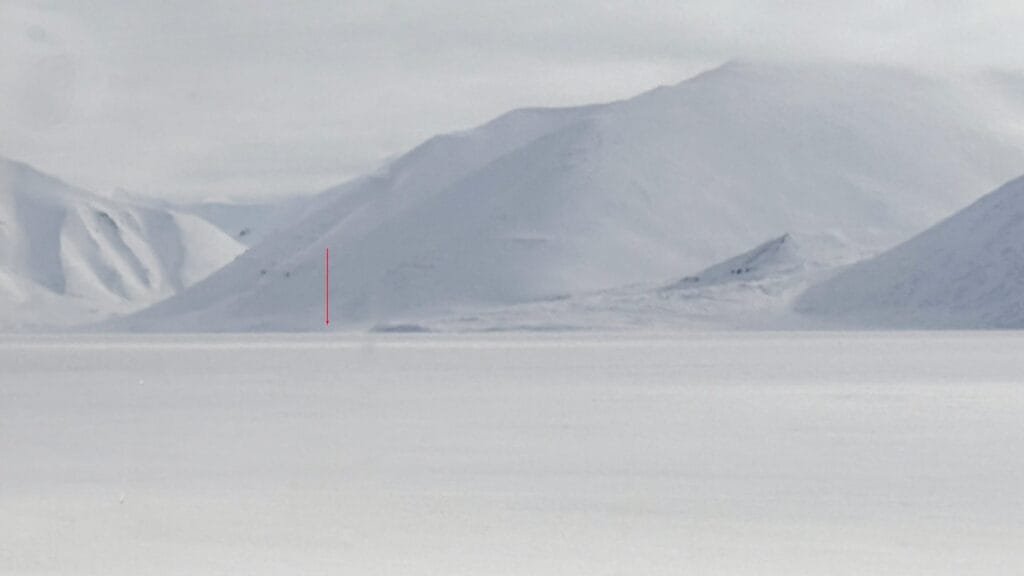
This is how I eventually spotted a tiny yellow dot, moving ever so slightly across the snow — our first bear. Even with a 600mm lens and a teleconverter, it was barely more than a pixel in the frame. We stayed there overnight, hoping it might wander closer, but it never did. Still, it was thrilling to witness — my first real pixel bear.
-
They’re technically marine mammals. Yup — polar bears spend most of their lives on sea ice and in the water, so they’re classified more like seals than land bears.
-
Their fur isn’t actually white. It’s translucent! Each hair shaft is clear and hollow, and it reflects light, making them appear white against the snow.
-
They can smell a seal from over 1.5 kilometres away, even under thick ice.
-
They can swim for hours at a time in near freezing water. Some have been tracked swimming over 100 km (60+ miles) without a break.
-
They don’t hibernate. Only pregnant females den up in winter. The rest just keep on roaming, hunting, and napping in snowbanks.
Our second bear sighting happened in Van Mijenfjorden, which is the next fjord south from Longyearbyen. First we saw its tracks, and after scanning the landscape for what felt like forever, we spotted it — another tiny yellow dot, well over 4 km away, walking along the ice. The setting was stunning, the light was perfect… all we needed was for the bear to close the gap. Just a kilometre or two — maybe five? Instead, it laid down for a nap.
I was secretly hoping the smoky scent of our kielbasa sausage lunch might tempt the bear to wander closer — but no such luck. The crew began preparing for a possible zodiac launch, even fitting us with exposure suits, just in case we got a closer opportunity.
Then, everything changed.
A research helicopter suddenly appeared, flying in fast and low. My guess is they spotted the bear because they saw our ship holding position — it was obvious we were watching something. The helicopter made multiple low passes, and the bear — clearly distressed — started running across the ice. This continued for nearly 10 minutes before they finally tranquilised it and landed. It was a harsh and heartbreaking end to what could have been a truly special encounter. You can read more about that incident on PetaPixel, and if you feel the same way we do, please consider signing the petition to put an end to this kind of unnecessary harassment of Arctic wildlife.
Our third and final bear was in Nordfjorden, just across from Longyearbyen. We watched as it ambled along the edge of the ice in front of an iridescent blue glacier.
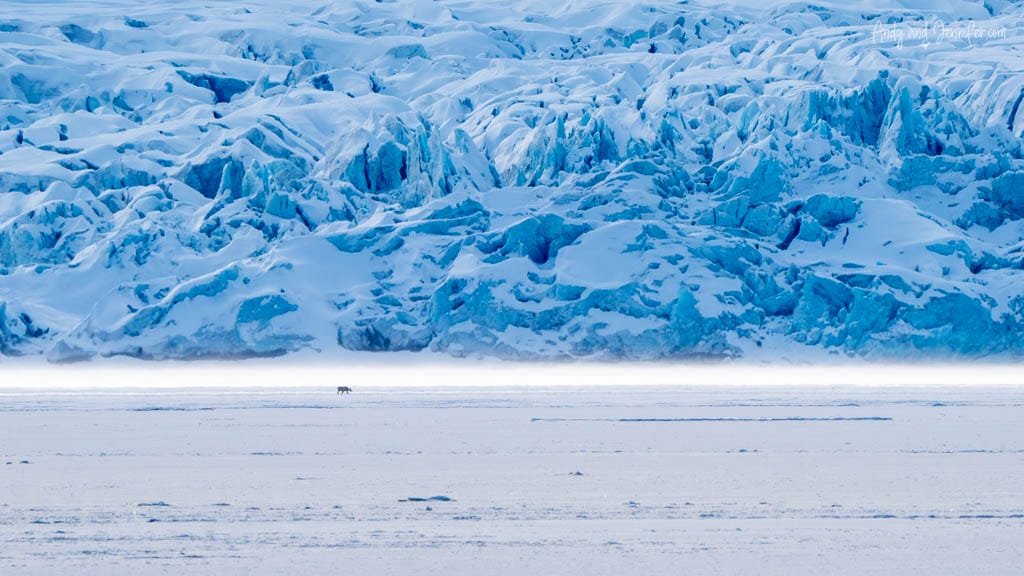
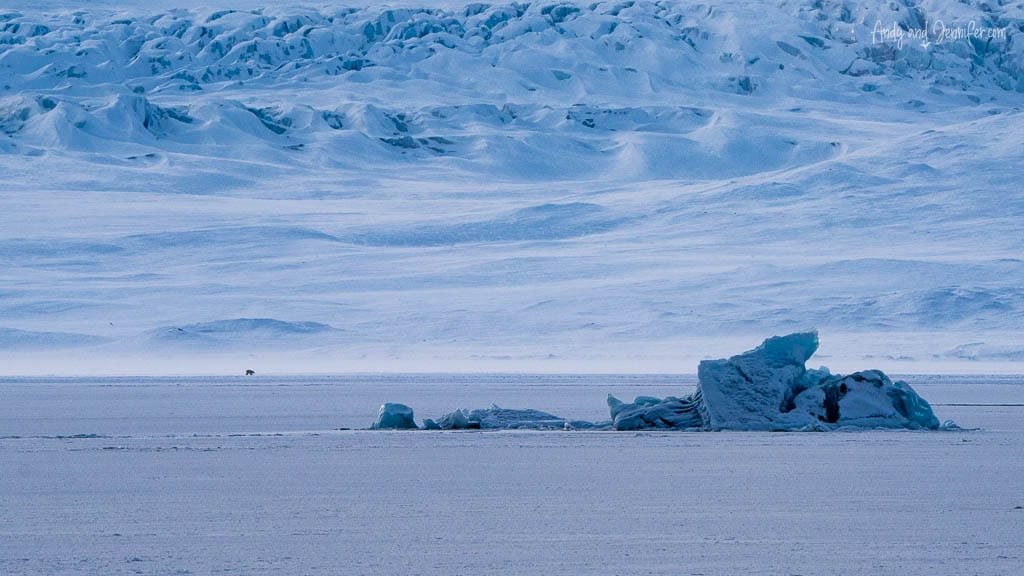
Once again, the bear was a napper, and plopped down in front of the glacier about 3km away. We had a hard deadline to leave by 8 p.m. to return to port, but we decided to wait it out and spent the afternoon photographing seabirds while keeping one eye on the tiny yellow dot. Meanwhile, the chef and crew were busy preparing a surprise farewell dinner — the dining room was decorated, and the staff were all dressed in their finest. But that’s the nature of a true expedition: the wildlife dictates the schedule. So when the bear finally got up at 7 p.m., the captain held the ship, and dinner was put on pause.
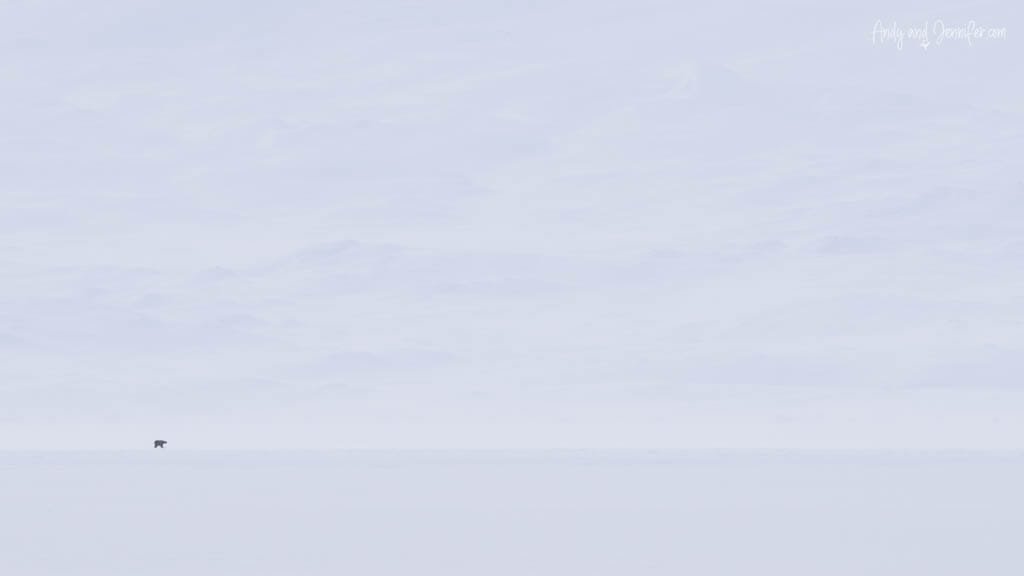
The bear never approached, but it was a great way to end the expedition.
Next up — The Birds of Svalbard
We’re Andy and Jennifer—two former corporate executives who chose long ago to prioritise experiences over stuff while pursuing our passions for travel and photography. From the Arctic to Antarctica, and most places in between, we’ve captured the world through our lenses and love sharing those stories. Our careers gave us the means, but our purpose is inspiring others to explore and helping people create images they’re proud of.




